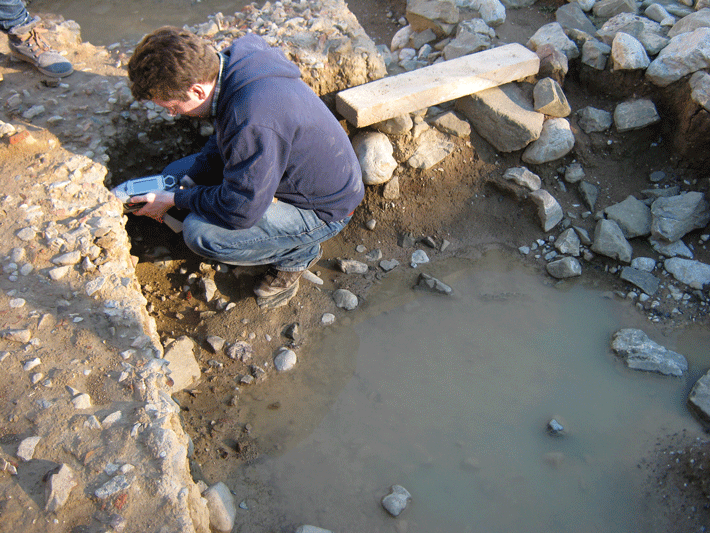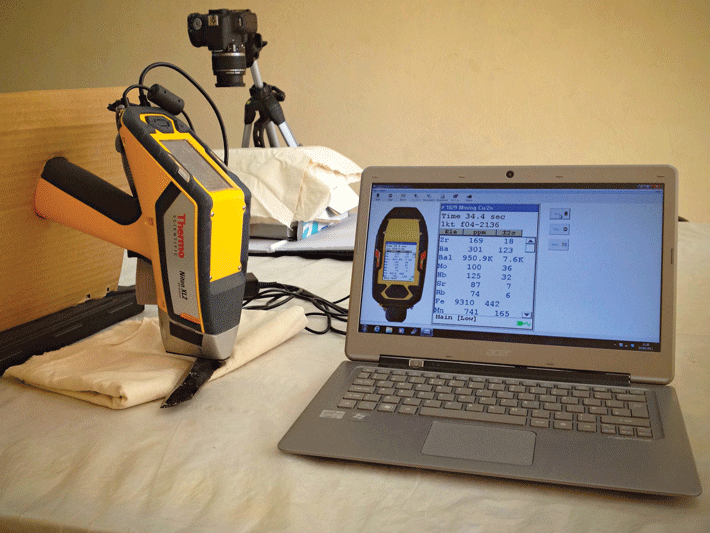Point-and-Shoot Obsidian Analysis
January/February 2014

Archaeologists can decipher a culture’s trade network and the distances it might have covered by tracing obsidian, used by ancient people for making tools, back to its source volcano. Until now, researchers sent the volcanic glass artifacts uncovered at sites to laboratories for analysis, with results only available months later. The time-consuming process could take up to five minutes per fragment—and there are often a lot of fragments.
University of Sheffield research fellow Ellery Frahm has successfully tested a new method for performing on-site obsidian sorting on more than 600 artifacts at two sites in Armenia. Frahm used a tool from the lab, a handheld instrument resembling a supermarket price gun, that performs X-ray fluorescence (XRF), scanning an artifact in only 10 seconds. The device discerns the concentration of certain elements in the material—such as iron and zirconium—creating a chemical signature that can be compared with nearby obsidian sources.
 Moving XRF into the field, Frahm explains, could offer archaeologists real-time, on-site guidance for their excavation strategies. Critics, however, say the method sacrifices analytic precision, which would render it useless in regions that have a glut of obsidian sources, such as western Mexico.
Moving XRF into the field, Frahm explains, could offer archaeologists real-time, on-site guidance for their excavation strategies. Critics, however, say the method sacrifices analytic precision, which would render it useless in regions that have a glut of obsidian sources, such as western Mexico.
Frahm likens the method to the preset modes on a digital camera—though the process lacks the control and precision of traditional lab methods, it provides a useful, expedient shortcut. “The preset modes allow one to take many more photos, often very good ones, much faster,” he says. “That’s not a bad thing.”